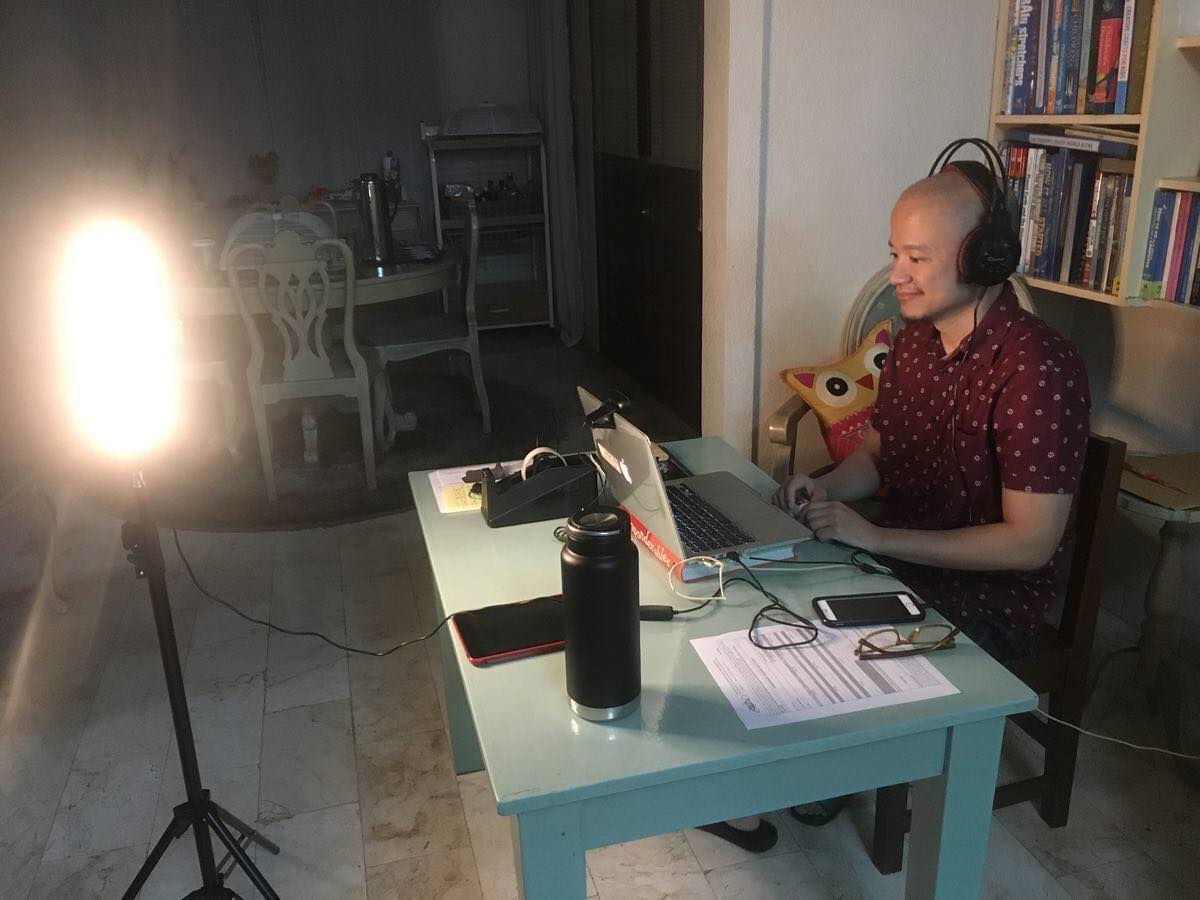As someone who teaches social issues for a living, Enrique Niño Leviste, PhD is used to his classes being heated up with debates and discourses. “For me, nothing beats constant social interaction on-site,” he shares.
He finds that one of the joys of teaching is seeing his students participate and interact with him and each other. Now, he is faced with the challenge of maintaining the ‘social’ aspect of the social sciences. “I have already accepted the fact that we have to adapt and along with that adaptation,” he adds.
Additionally, he faces the daunting challenge of filling the lack of fieldworks and practicums necessary for a budding social sciences student to truly immerse themselves into what they’re learning. Leviste believes that physically practicing the social sciences makes it possible for one to fully experience what it’s like to do research in an actual setting.
Nonetheless, Leviste accepts the challenge of adjusting to new ways of teaching. One of the new methods he’s found now is drawing from his own experiences and sharing them with the class. “Storytelling is very effective, not only among colleagues but also between students and teachers,” he shares. “[It’s] a down-to-earth pedagogical approach. It’s not too formal but it’s effective because it comes out rather naturally for a researcher who’s experienced a lot of fieldwork in [their] life.”
He’s also made use of various visual aids such as videos and photo essays, since this helps spark the interest of students. Leviste believes that the change in content momentarily breaks the monotony of readings, effectively engaging his classes.
He adds that once in a while, he’ll require his students to attend a webinar to switch things up. “Siyempre magsasawa din yung estudyante kung ako lang yung nagsasalita palagi! (My students would get sick of me if I’m the only one talking all the time!)” he jokes.
Aside from his own individual efforts in innovating his class, Leviste also emphasizes the importance of rapport among instructors. He says that he and his faculty share drinks or eat meals over video call, and it helps him in realizing that he is not alone in undertaking online learning.
Establishing trust in his work life seems to be a reason why his students don’t hesitate to share insights, opinions, or even seek help from him. He shares that to establish this relationship, you need to maintain constant communication.
Leviste proves he is true to this approach as he recounts his intersession experience in teaching international Japanese students. “They’re quite traditional [and] used to a more authoritative teaching style. Just conform or follow. But apparently, when I applied a more participatory approach wherein I asked them to tell me how they want the class to proceed, they did not hesitate to actually tell me.”
When asked about what kind of advice he’d give to those struggling with the online setting, Leviste advises students to take breaks when needed. “I think it’s a matter of disciplining yourself as well and being conscious of what your body needs,” he concludes. “Kung yung katawan mo nagmamakaawa na parang ‘paghingain mo na ako’ (If your body is begging that you should take a break), you will know that. And you have to do your body a favor and just give in.”






